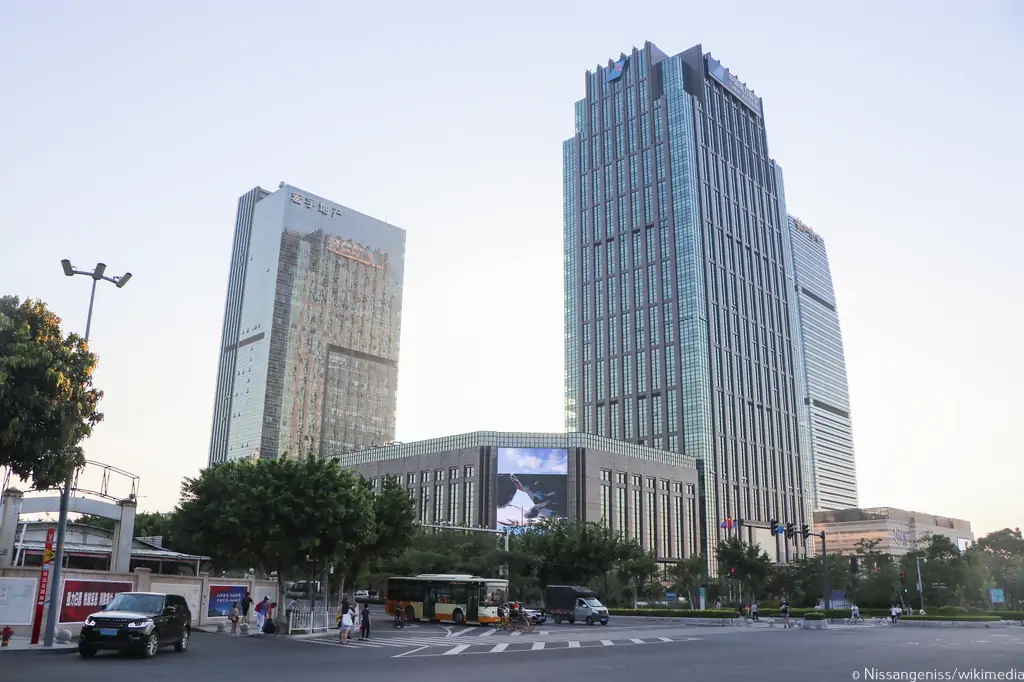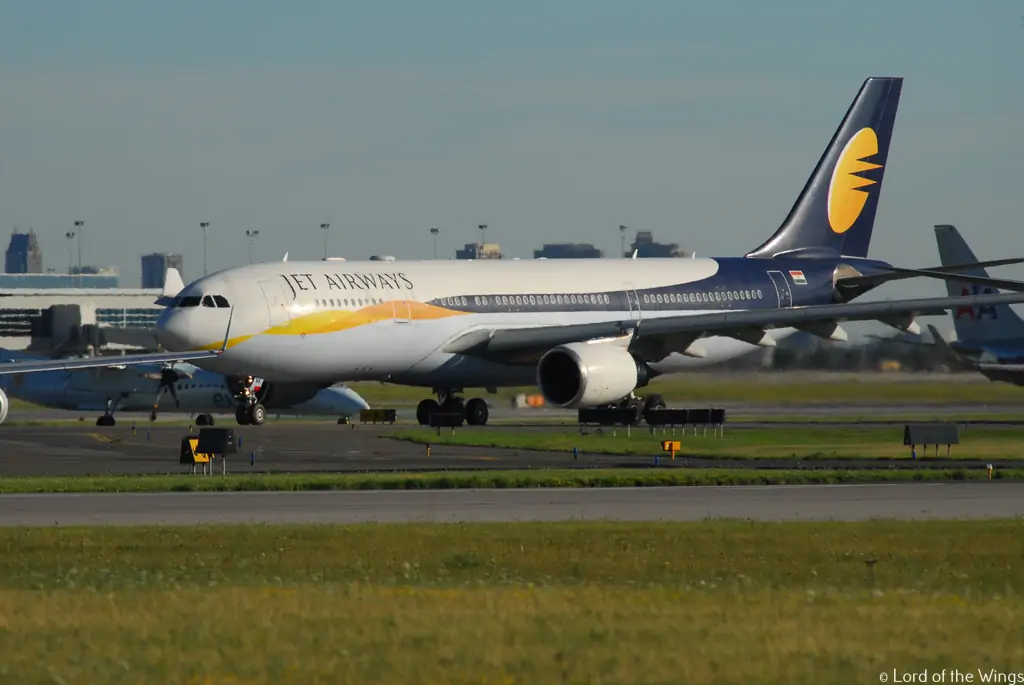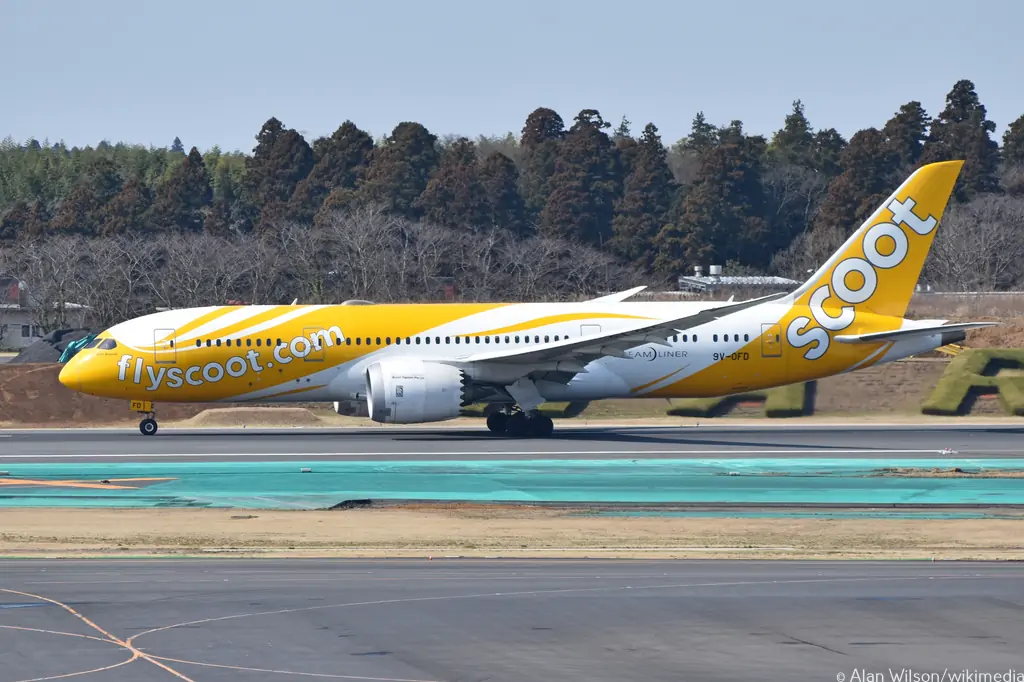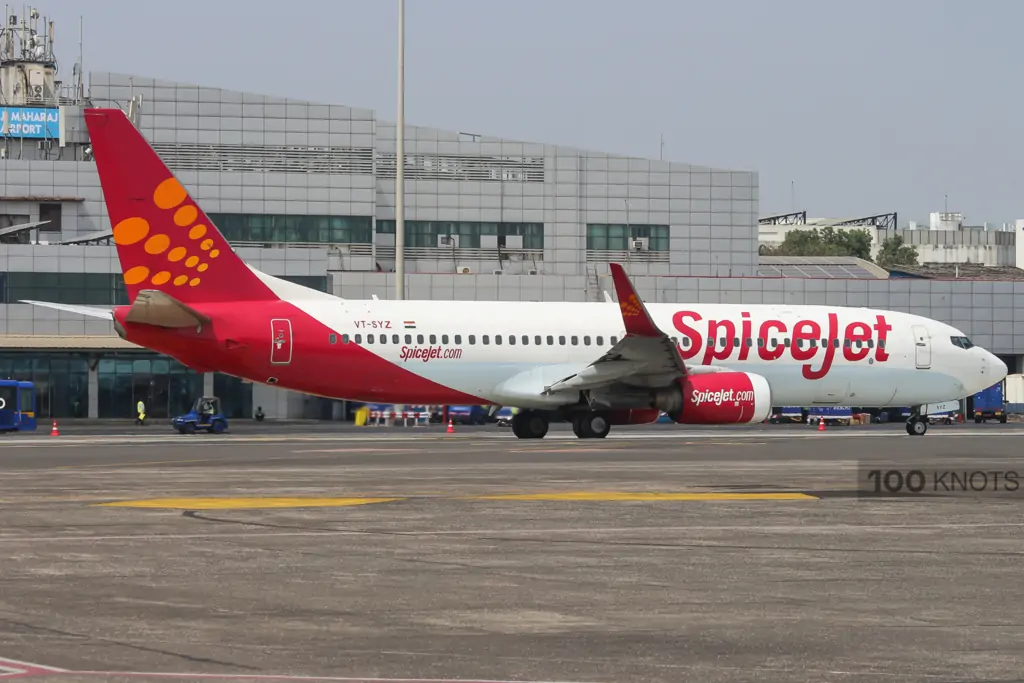Air travel has revolutionized the way we explore the world, but it has additionally brought about concerns pertaining to the environment owing to carbon emissions. Fokker, a Dutch aircraft manufacturer, is stepping up to the challenge of mitigating climate change while advocating sustainability in the aviation sector. With the goal of flying over 2,500 kilometers (1,550 miles) without emitting any carbon emissions, Fokker hopes to usher in a new era of 'Green Flying' with its next-generation aircraft.
Present Situation
The manufacturer aspires to develop an adaptable and versatile next-generation aircraft that will operate on a mix of sustainable aviation fuel (SAF) and kerosene, as well as eco-friendly designs, sustainable manufacturing, natural light, and reduced noise pollution. Rooftop panels will be installed in an improved cabin, providing a novel approach to minimizing the likelihood of jet lag and enhancing passenger comfort. The current design aims to differentiate Fokker from its competitors by giving it a futuristic appearance.
Fokker's Green Flying Vision
Innovations in Sustainable Aviation
The aviation sector is undergoing a paradigm shift towards sustainability, with a renewed emphasis on lowering carbon emissions. Fokker recognizes the need for change and envisions an ecologically responsible future for aviation transport. Fokker is committed to paving the way for developing carbon-efficient aircraft with low ecological impact by utilizing technological developments and innovative solutions.
The Need for Carbon-Efficient Aircraft
The need to lower carbon emissions across all industries has been underscored by the urgency of addressing climate change. Because the aviation industry contributes significantly to greenhouse gas emissions, it must take proactive actions to reduce its environmental impact. Fokker's goal of developing a next-generation aircraft with zero carbon emissions demonstrates its commitment to establishing a more sustainable aviation sector.
Development of Next-Generation Aircraft
Design that is Adaptable and Versatile
The next-generation Fokker aircraft will be adaptive and versatile, catering to a wide range of flying requirements. This aircraft seeks to provide efficient yet environmentally sustainable travel solutions for short-haul regional excursions as well as long-haul intercontinental journeys. Fokker seeks to enhance fuel economy and minimize carbon emissions by optimizing its aerodynamics, weight distribution, and propulsion systems.
Sustainable Aviation Fuel (SAF) and Kerosene Blend
The use of sustainable aviation fuel (SAF) in conjunction with kerosene is a crucial component of Fokker's green flying efforts. When compared to standard jet fuels, SAF is obtained from renewable sources such as plant-based feedstocks and waste materials, resulting in much lower carbon emissions. Fokker's next-generation aircraft will run on a blend of SAF and kerosene, minimizing its carbon footprint while contributing to a more sustainable aviation industry.
Eco-Friendly Design Elements
The dedication to sustainability at Fokker extends to the design of their next-generation aircraft. The aircraft would include eco-friendly characteristics such as lightweight materials, sophisticated composite structures, and efficient engine systems. These design characteristics not only enhance fuel efficiency but also lower the total ecological impact of aircraft manufacturing and operation.
Practices for Sustainable Manufacturing
Fokker intends to use sustainable manufacturing practices for its next-generation aircraft, in addition to eco-friendly designs. This includes reducing waste, optimizing the consumption of energy, and incorporating recycling and circular economy concepts throughout the production process. Fokker seeks to create new benchmarks for environmentally conscious aircraft production by embracing sustainable practices.
Fokker's Next-Generation Aircraft's Environmental Impact
Carbon Emission Reductions
Fokker's next-generation aircraft will considerably contribute to the reduction of greenhouse gas emissions in the aviation sector by emitting no carbon during flight. This ground-breaking technology complements worldwide efforts to battle climate change and transition to a more sustainable future. Fokker's aircraft's carbon emission reductions will be critical in lessening the environmental effect of air travel.
Climate Change Mitigation
Climate change is a major worldwide concern, and the aviation sector has responsibility for reducing its contribution to it. Fokker's next-generation aircraft offers a positive step forward, providing a credible alternative to reducing carbon emissions in air travel. Fokker is pushing positive change and establishing an example for other aircraft manufacturers to follow by pioneering green flying.
The Future of Green Aviation
Fokker's ambitious project to create a next-generation aircraft that emits no carbon emissions is a big step forward in the goal of sustainable aviation. As more manufacturers adopt environmentally friendly technology and practices, the future of green flying appears bright. Fokker is positioned to revolutionize the aviation sector and lead the path for a cleaner future by prioritizing environmental sustainability without sacrificing performance or passenger satisfaction.
Conclusion
Fokker's commitment to developing a next-generation aircraft that emits no carbon emissions demonstrates its dedication to sustainability. Fokker is leading the way towards green flying with a combination of revolutionary design, renewable aviation fuel, eco-friendly features, and decreased noise pollution. Fokker's next-generation aircraft demonstrates the possibility of a more sustainable aviation industry by addressing the environmental effects of air travel. Looking ahead, it is critical that additional manufacturers join this trend, working together to cut carbon emissions and build a greener, more ecologically conscious aviation sector.
With Inputs from Fokker Next Gen
Read next
In the modern era of technology, staying connected when travelling has become an imperative rather than a luxury. Recognizing this, Emirates has recently made substantial improvements to its in-flight connectivity, ensuring that all passengers, regardless of class of travel, may now enjoy the benefit of complimentary connectivity provided they sign up for Emirates Skywards. This improvement has been well embraced, with an additional 30,000 Economy Class passengers connecting to complimentary onboard Wi-Fi on a weekly basis.
Overview of Emirates' Enhanced In-Flight Connectivity
Emirates has long been at the forefront of offering passengers a seamless travel experience. The airline has taken another step towards ensuring passengers can stay connected even at 40,000 feet by recently improving its in-flight connectivity. This enhancement includes an array of connectivity options, allowing travellers to access the internet, converse with loved ones, work, or simply occupy themselves throughout their journey.
Present Situation
Emirates has consistently been at the forefront of in-flight Wi-Fi improvements, having invested more than $300 million in onboard connectivity to date. All Emirates Skywards members in every category of travel can now take advantage of some type of complimentary connection. Skywards members, whether Blue, Silver, Gold, or Platinum tier, travelling in any class, Economy, Premium Economy, Business, or First Class, can enjoy free app messaging. Additionally, First Class passengers who are Skywards members are entitled to unrestricted internet access for free, allowing them to buy or work online while in flight, as are Silver, Gold, and Platinum Skywards members travelling in Business Class. Platinum Skywards members enjoy complimentary internet access in all classes.
Benefits of the Enhancement
Free Connectivity for All Emirates Passengers
One of the most noticeable benefits of this upgrade is that it provides free connectivity to all Emirates passengers. If you become a member of Emirates Skywards, you can now enjoy complimentary onboard Wi-Fi, whether you are flying in Economy, Business, or First Class. This is a big shift in the business since formerly complimentary Wi-Fi was sometimes restricted to specific classes or frequent flyer programmes.
Increased Access for Economy Class Passengers
The improvement has helped Economy Class passengers in particular, who now have more access to complimentary onboard Wi-Fi. Previously, these travelers had few alternatives for remaining connected, which might be irritating on long-haul trips. However, with this new advancement, Emirates has closed the gap and given all passengers an equal opportunity to experience the convenience of in-flight connectivity.
How to Join Emirates Skywards
Signing up with Emirates Skywards is a quick and easy procedure. Passengers may establish their Skywards account by visiting the Emirates website or using the mobile app. They will get access to a variety of services, including complimentary onboard Wi-Fi, after they have enrolled. Emirates Skywards also provides extra benefits, such as the ability to earn and redeem miles for flights, upgrades, and other prizes, making it a desirable loyalty programme for regular travellers.
Available Connectivity Types
Complimentary Onboard Wi-Fi
Emirates' enhancement includes complimentary onboard Wi-Fi for every passenger. This means that once you have signed up for Emirates Skywards, you'll have unlimited internet access throughout your journey at no extra cost. Whether you need to check your emails, browse the web, or remain connected on social media, in-flight Wi-Fi keeps you connected and lets you make the most of your time aboard.
Additional Paid Connectivity Options
In addition to the complimentary onboard Wi-Fi, Emirates provides paid connectivity alternatives to passengers who require more bandwidth or have more stringent connectivity requirements. Individuals who rely extensively on internet connectivity for work or who demand quicker bandwidth for streaming high-definition material would benefit from these solutions. Emirates ensures that all passengers may adapt their in-flight experience to their particular needs by offering both complimentary and premium connection options.
Conclusion
Emirates' newest enhancement to its in-flight connection marks an important milestone in the aviation sector. Emirates has proven its commitment to offering an extraordinary travel experience by providing free Wi-Fi to all passengers and increasing access for Economy Class travellers. This innovation enables passengers to stay connected, productive, and entertained during their flight, providing a more gratifying and delightful travel experience.
With Inputs from Emirates
Read next
China Southern Airlines, one of China's leading airlines, has just begun construction on a new base in Shenzhen. Shenzhen, located in Guangdong's southern province, borders the Special Administrative Region of Hong Kong, making it a perfect site for the airline's development goals. A ceremony was conducted on Friday, May 19th, 2023, to celebrate the start of construction, signaling a key milestone for both China Southern Airlines and the city of Shenzhen.
China Southern Airlines' History
China Southern Airlines is a prominent airline in the People's Republic of China. In terms of passenger counts and fleet size, it is the country's largest airline. The airline, headquartered in Guangzhou, has a considerable presence in both local and foreign markets. Its enormous network connects China to the rest of the globe via a diverse network of destinations.
Shenzhen: An Ideal Location
Shenzhen, a vibrant and ever-growing metropolis, provides China Southern Airlines with significant benefits. Because both cities are well connected by multiple kinds of transportation, including high-speed trains, ferries, and bridges, their closeness to Hong Kong provides abundant chances for further transportation. Shenzhen's status as a significant economic and technical centre in Southern China adds to its allure as a suitable home base for the airline.
Commencement of Construction
The start of the construction process on China Southern Airlines' new base in Shenzhen is a significant step forward in the airline's development goals. The celebration on May 19th, 2023, convened essential stakeholders and officials to commemorate this historic occasion. The building project is planned to last five years, demonstrating the airline's dedication to long-term growth and development.
Timeline and Investment for the Project
China Southern Airlines has made a significant investment in its new Shenzhen base. The airline is investing 2.4 billion yuan ($341 million) to construct a sophisticated and effective facility to fulfil the needs of its expanding operations. The project has a five-year timeframe, with phased construction and development to ensure a seamless transition and minimal disruption to the airline's operations.
Benefits of the New Base
China Southern Airlines is going to benefit from the development of a new base in Shenzhen in an array of aspects. For starters, it enables the airline to increase its operating capabilities and capacity to meet the region's expanding demand for air travel. The new base will serve as a solid basis for the airline to improve services and optimize operations, resulting in increased efficiency and customer satisfaction.
Increased Operational Capabilities
China Southern Airlines has the potential to significantly extend its operating capabilities with the establishment of a new base in Shenzhen. With additional capacity and resources, the airline can provide more flight options, frequencies, and destinations. This expansion improves connectivity for customers by allowing them to easily reach a broader selection of domestic and international destinations via the airline's substantial network.
Prospects for the Future and Growth Opportunities
The development of China Southern Airlines' new base in Shenzhen lays the groundwork for future chances and potential. The airline is well-positioned to meet rising demand for air travel thanks to increased operating capacity and greater connections. Shenzhen's strategic position allows the airline to enter expanding markets and explore new routes, supporting sustained expansion and prosperity.
Conclusion
The commencement of the construction process on China Southern Airlines' new base in Shenzhen marks an important milestone for both the carrier and the city. The significant investment and long-term ambition of the project demonstrate the airline's commitment to delivering great services and growing its operations. China Southern Airlines hopes that the new base will improve connectivity, increase economic growth, and give travelers seamless travel experiences throughout Southern China and beyond.
Read next
Uncertainty continues over the revival of grounded Jet Airways as the validity of the airline's air operator's certificate expired on Friday, May 19. There was no word from the Jalan Kalrock Consortium (JKC), which emerged as the winning bidder for the carrier under the insolvency resolution proceedings, on the airline’s flying permit status. The airline’s Air Operator’s Certificate (AOC), which has not flown since April 18, 2019, was revalidated on May 20 last year for a one-year period and the validity ended on Friday, May 19.
However, it could not be immediately ascertained whether the consortium has sought any relaxation from the aviation regulator DGCA with respect to the AOC, which is the most crucial requirement for operating an airline. A query sent to Ankit Jalan, a board member of the JKC, on whether the consortium has sought renewal of the AOC remained unanswered. The ownership transfer of Jet Airways to the JKC is yet to happen amid continuing differences with the lenders of the airline.
Jet Airways' Revival Plan
Debt-ridden Jet Airways, which flew for 25 years, shuttered operations on April 18, 2019. The insolvency resolution process of the carrier began in June 2019 and the National Company Law Tribunal (NCLT) approved a resolution plan submitted by the JKC in June 2021. Last week, the Consortium reportedly approached the NCLT asking it to grant more time to pay the creditors and implement the revival plan.
In January, the NCLT approved the transfer of Jet Airways’ ownership to JKC, stating that the conditions had been met. The tribunal set November 16, 2022, as the effective date for the resolution plan. Lenders of Jet Airways had approached the NCLAT, opposing the transfer of ownership to the consortium. They alleged that JKC had not fulfilled its obligations and argued against the ownership transfer.
Jet Airways was grounded in April 2019 due to substantial losses and approximately ?8,000 crore in debt. In October 2020, the airline’s Committee of Creditors approved the revival plan submitted by the Jalan-Kalrock consortium.
Furthermore, JKC's inability to fulfil certain AOC renewal criteria poses additional challenges. One of the major shortcomings is the consortium's lack of aircraft, a vital component for operating an airline. The absence of necessary pilots and cabin crew on the consortium's rolls further disqualifies JKC from eligibility for AOC renewal. Sources indicate that the two Boeing 737 aircraft that were leased by JKC have been reclaimed by the lessors, exacerbating the challenges faced by the consortium.
JKC missed the May 15 deadline to pay the first tranche to Jet Airways' creditors. Consequently, the consortium sought more time from the National Company Law Tribunal (NCLT) to fulfil its financial obligations. It is important to note that JKC does not yet have ownership of Jet Airways, further clouding the future prospects of the airline, and renewing this license won't be easy as the airline will have to convince the DGCA about its ability to fly which in Jet's case may not be possible as yet.
Sources also say that the Jet 2.0 team is almost deserted with no senior executive left in the airline after CEO-designate Sanjiv Kapoor quit last month. It has been nearly two years since the NCLT approved the resolution plan of Jalan-Kalrock but the airline is still far from taking off and hopes to see it in the skies again are only fading.
Airline in Loss
Meanwhile, a six-month time limit to make good on payment of INR 1.85 billion (USD22.4 million) to creditors also expired on May 14. There is no word from either camp that any payment was made. In January, the Mumbai bench of the National Company Law Tribunal (NCLT) ordered the payment within the defined timeframe. In exchange, the creditors would be required to issue the release certificate. In early May, Jet Airways filed another petition with the NCLT against creditors the State Bank of India, the Punjab National Bank, JC Flowers Asset Reconstruction (which acquired so-called "bad assets" from Jet Airways before its collapse), and Ashish Chhawchharia, the independent resolution professional on the Jet Airways management committee. A hearing is scheduled on June 6.
Separately, this week Jet Airways also reported a loss of INR 540 million for the quarter and year ended March 31, 2023, while its revenues for the quarter were INR124 million. The airline had reported a loss of INR 233.63 crore in the year-ago period. The company's revenue from operations for Q4FY23 rose by 12.5% to INR 12.4 crore as against INR 11 crore in Q4FY22. EBITDA stands negative at INR 18.76 crore in March 2023 up 90.17% from INR 190.76 crore in March 2022.
Jet Airways shares closed at 57.50 on May 17, 2023 (NSE) and have given -26.09% returns over the last 6 months and -45.00% over the last 12 months.
Read next
Scoot, a part of Singapore Airlines Group (SIA), has announced that eligible personnel will receive a six-month wage bonus. This great announcement follows the SIA group's exceptional financial performance for fiscal year 2022-23, which ended on March 31, 2023.
SIA Group's Financial Performance
The SIA group's most recent financial report for fiscal year 2022-23 exceeded expectations, disclosing record earnings of S$2.16 billion ($1.63 billion) earlier this week. This outstanding success may be ascribed to a number of factors, including excellent cost-cutting tactics, increased operational efficiency, and a recovery in global travel demand. The group's strong financial position has cleared the way for it to reward its personnel, ensuring they benefit from the success they helped create.
Scoot's Eligible Employees
The six-month wage bonus is available to eligible Scoot personnel, the SIA group's low-cost affiliate. Scoot's workforce includes pilots and cabin crew members, as well as ground personnel and administrative professionals. Scoot intends to acknowledge qualified personnel’s outstanding efforts and express its dedication to their well-being and pleasure by offering this incentive.
Current Scenario
SIA recorded a record profit of S$2.16 billion ($1.63 billion) earlier this week, which has been said to reverse the three prior years of losses. Scoot stated that the incentive was given in honor of the employees' devotion, hard work, and sacrifices, which helped the airline be successful and provide a solid foundation for the future.
Six-Month Salary Bonus
The six-month salary bonus is a significant award given to eligible Scoot personnel as a token of appreciation for their dedication and hard work. Employees will receive a big financial boost as a result of this incentive, which will provide them with more funds to support their personal and professional endeavors. Scoot intends to strengthen its credibility as an employer that values and invests in its personnel by distributing this incentive.
The Influence on Employee Morale and Satisfaction
The six-month wage bonus announcement is likely to have a significant beneficial impact on staff morale and satisfaction. This act of acknowledgment and gratitude may instill pride and loyalty in personnel, resulting in greater motivation and productivity. Employees who feel appreciated are more likely to be engaged and devoted to their jobs, which contributes to a healthy work environment and overall organizational success.
Talent Retention and Attraction
Attracting and maintaining the best personnel is critical for every organization's long-term growth and success in today's competitive labor market. Scoot's six-month wage bonus increases its appeal as a preferred employer, particularly in the aviation industry. This additional financial incentive can recruit competent staff members looking for attractive job possibilities while also serving as an effective retention tool for current employees.
Potential Challenges
While the six-month wage bonus is an important step towards increasing employee happiness, it may present some issues for the organization. Managing the financial consequences of such incentives, as well as ensuring equal distribution among qualified employees, might require careful preparation and execution. Furthermore, keeping consistency in employee awards and perks over time might be a difficulty that Scoot must solve.
Conclusion
The six-month wage bonus for eligible Scoot personnel is a significant step towards recognizing their contributions and improving their general well-being. This substantial reward not only enhances employee morale and happiness but also establishes Scoot as a preferred employer in the aviation sector. Scoot hopes to build a pleasant work culture, recruit top talent, and improve its reputation as a responsible and employee-centric organisation by investing in its workers.
With Inputs from CNA
Read next
The Directorate General of Civil Aviation (DGCA) has deregistered three planes of low-cost SpiceJet at the request of lessors, the latest in a string of troubles for the cash-strapped airline. Of the three, two were non-operational and its operations had not been affected, SpiceJet said on May 19.
Earlier this month, Lessors Wilmington Trust SP Services, Sabarmati Aviation Leasing and Falgu Aviation Leasing approached the civil aviation regulator, requesting the deregistration of three Boeing 737-800s over non-payment of dues. The DGCA deregistered the planes with call signs VT-MXJ, MXF and SZJ.
The move comes a few days after the no-frills airline had said it was taking steps to bring a part of its grounded fleet back in the air after rival Go First opted for voluntary insolvency. The airline also said it had no plans to file for insolvency even as several of SpiceJet’s aircraft remain grounded due to various reasons.
"Out of the five planes listed for deregistration, one lessor has already requested DGCA to suspend the deregistration of two aircraft. Out of the remaining three, two were grounded for a long period and not operational. Hence, there is no impact on our operations. We remain focussed on bringing on our grounded fleet back into operations," a SpiceJet spokesperson said.
SpiceJet is facing insolvency resolution proceedings over the non-payment of dues amounting to INR 40 crore for four B737-800s. The National Company Law Tribunal (NCLT) has issued a notice to the airline and the hearing is slated for May 25.
The Gurugram-based airline is also caught in a legal wrangle with Credit Suisse, which moved a contempt of court petition in the Supreme Court. The court has given SpiceJet time till July 18 to pay Credit Suisse USD 24 million, which the Swiss firm is seeking for servicing of aircraft engines and components in 2013.
A few months ago, Carlyle Aviation converted its USD 100 million dues into equity and acquired compulsorily convertible debentures in SpiceXpress, the airline’s cargo arm, giving it a 7.5% stake.
SpiceJet owes Aircastle around $6 million. The NCLT asked SpiceJet to file a response to the plea and explore options for settlement. The tribunal has listed the insolvency plea against SpiceJet on May 25. The airline said earlier that it has no plans to file for insolvency. The SpiceJet statement added: "Our lessors have supported us through thick and thin and continue to do so and we are grateful for their support and confidence".
According to an aircraft tracking website, SpiceJet had 67 aircraft in its fleet comprising Boeing 737s, B737 Max and Bombardier-Q400s. Out of these, only 37 were in operation as on May 3. As of date, approximately 27 aircraft out of its fleet of 61 aircraft are grounded due to financial issues and need of spare parts, as per data from flight tracking website flightradar24.
The carrier has been in talks with lessors, investors and lenders in India and abroad for renegotiating contracts, raising funds, and restructuring.
In January 2020, SpiceJet’s domestic market share was at 16.6%, with a fleet size of 119. This fell to 7.3% in January 2023 with a fleet size of 65 jets; however, only 34 of its planes are currently operational. The market size of the airline has further reduced to 5.8% as per April data from DGCA.
SpiceJet CMD Ajay Singh had recently ruled out filing for insolvency. “There is absolutely no question of filing for insolvency,” he had said. The past few months have seen some lessors filing applications with DGCA to repossess their planes from the airline. “We have a great relationship with all our partners. Our lessors have supported us through thick and thin and continue to do so and we are grateful for their support,” Ajay Singh had said.
The deregistering of SpiceJet’s planes is the latest turbulence to hit the Indian aviation sector. Jet Airways bid to fly again has jolted to a halt, Go First has been granted bankruptcy protection but faces uncertainty and SpiceJet continues to face lessors’ wrath.
On May 19, the stock closed 1.08% down from the previous close at INR 29.23.








Comment